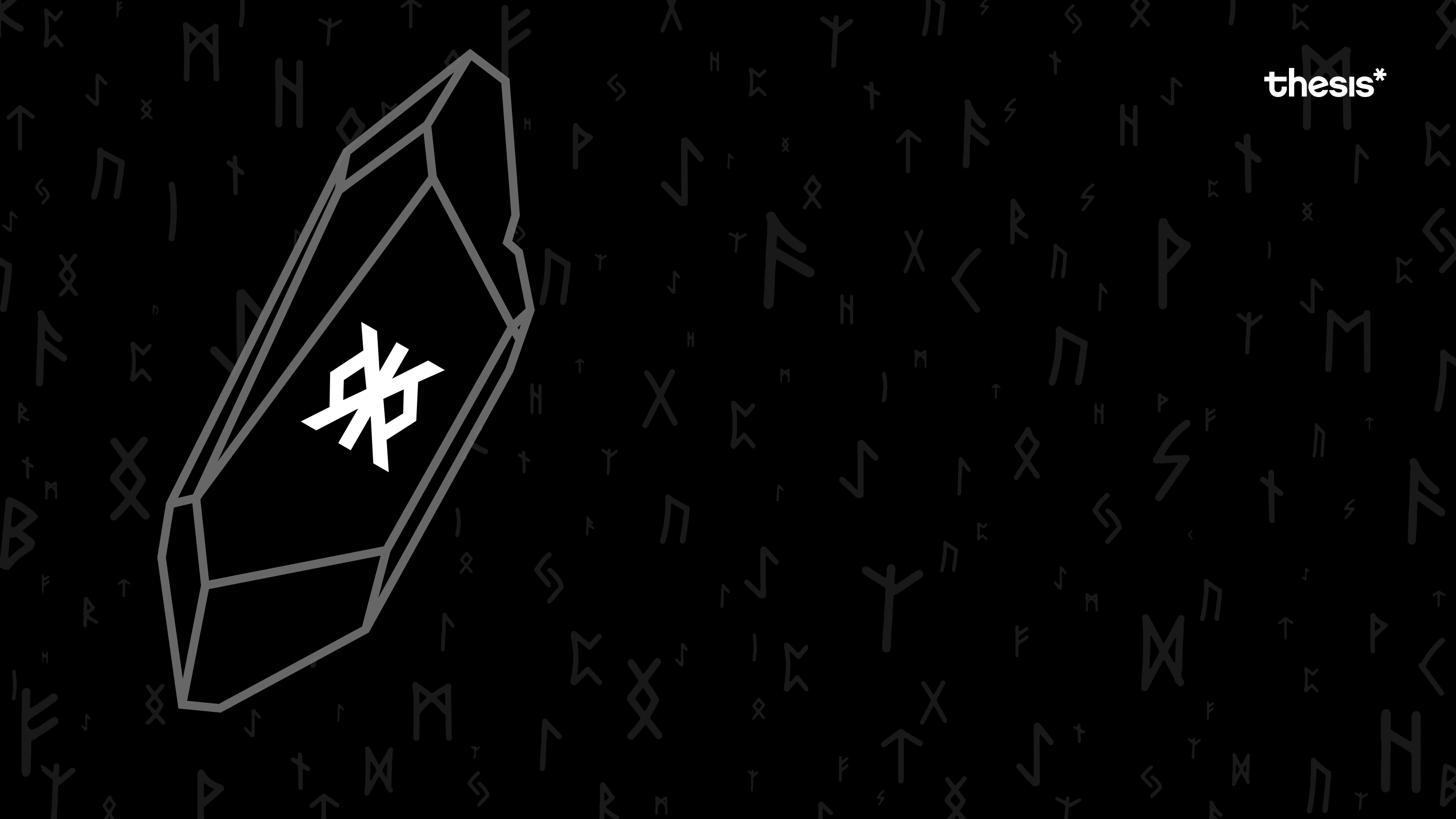Runes exploded onto Bitcoin during the halving, temporarily spiking per-block fees to all-time highs that exceeded $2.4 million. In all, during the protocol’s first week, it generated over $135 million in fees on Bitcoin.
Now, Runes tokens holistically account for roughly $700 million in market capitalization. While the hype around Runes has cooled off drastically in terms of being the “next big thing”, they still command a large share of transaction percentage and have completely taken over BRC-20 trading.
This is a good thing: Runes have a much more efficient UTXO management and reduce network clutter as compared to BRC-20. Memecoin trading on Bitcoin will persist, at least for now, so it might as well be done more efficiently.
But what exactly are Runes, why did they cause that spike, and how has their arrival altered the transaction market on the Bitcoin network?
Overview
Runes were able to originate thanks to the Ordinals protocol and BRC-20 tokens, a primitive form of fungible tokens on Bitcoin. Runes were created by Casey Rodarmor (who also created the Ordinals protocol) to improve upon BRC-20s, with a simpler more efficient means to launch such tokens.
The Ordinal protocol made it possible to inscribe data directly onto the Bitcoin network, resulting in a vibrant art scene, where creators reinvented NFTs as permanently inscribed on-chain assets on Bitcoin. The rise of BRC-20 tokens resulted from the exploration of the Ordinals protocol, which essentially recreated the existing Ethereum-based ERC-20 token on Bitcoin.
BRC-20s quickly gained popularity and struck the nerve of meme-coins cultures, capturing the attention of Solana and Ethereum ecosystems. In 2023, tokens like ORDI and SATS eclipsed 1B market caps, showing the attention they were able to capture within the Bitcoin and broader crypto ecosystems.
They’ve since cooled, down ~50% off the previous highs.
The expansion of BRC-20 tokens soon began to raise the question of whether they spammed the network with unusable UTXOs, harming Bitcoin network health. To address these issues, Rodarmor developed Runes with specific goals—minimize the on-chain footprint and optimize on-chain data storage and management. As such, Runes reduces the steps to creating assets on-chain and is designed to integrate seamlessly with Bitcoin’s existing UTXO model.
Market Impact and Response
Hotly anticipated and coinciding with a relative surge in general meme-coin interest, the deployment of Runes created a fervor.
While they are virtually identical to BRC-20s from a user perspective in buying and selling, Runes marked the beginnings of a new narrative and ignited some fresh interest. In the race to establish their collections as low-numbered Runes in the official index (theoretically being prescribed a premium on the market), the creators of the first Runes collections bid against one another for block space at the protocol launch.
As collections were rapidly inscribed, eager collectors lined up to mint their runes, significantly contributing to the spike in overall transaction volume. However, this peak was short-lived, and as the initial excitement waned the impact of Runes on transaction fees began to represent an increasingly smaller portion of the total.
Nonetheless, they are still dominating the share of fees on a comparative basis when looking at BRC-20s, which, again, is a good thing.
With the downward slide in fee volume, a similar drop occurred in hashprice, a metric that defines how much a miner can expect to earn from a given quantity of hashrate. The price plummeted to all-time lows around $45/Ph/day, where it fluctuates.
Proof of Appetite
Runes prove that there remains a strong desire for speculation on top of Bitcoin, as with other crypto ecosystems. With a more efficient way to satisfy that speculation vs. BRC-20s, Runes are poised to be a sustainable means of transaction activity for the foreseeable future on Bitcoin. Runes struck the core of the tendency for communities to form around meme-coins, imparting a rapid means for anyone to launch their own, directly on Bitcoin.
Front-end services for users nearly immediately adopted Runes after the rollout. Luminex is one widely used service that allows for the creation and minting of Runes to anyone who connects a Bitcoin wallet. MagicEden and UniSat also integrated a dedicated Runes marketplace, allowing users to place trades just like they do for BRC-20 tokens.
What A Bright Spark May Ignite
Even if fleeting, Runes proved that a sufficient demand behind a fee-generating protocol, whether driven by curiosity or hype, is capable of partially eclipsing the fee revenue driven by traditional BTC transactions and even the block reward subsidy. They evidenced the ecosystem’s appetite to continue trying new things on Bitcoin, yet also show that superficial values like hype and the mania encouraging meme-coin growth will likely not be enough to sustain fees systemwide on a long-term basis.
To drive a shift towards sustainable growth in network fees, it will take significant network activity on Bitcoin as a whole. Through a combination of Runes, Ordinals, Metaprotocols, or new Bitcoin scaling protocols, Bitcoin can be an active network that powers transaction activity, speculation, and settlement for alternative networks.

